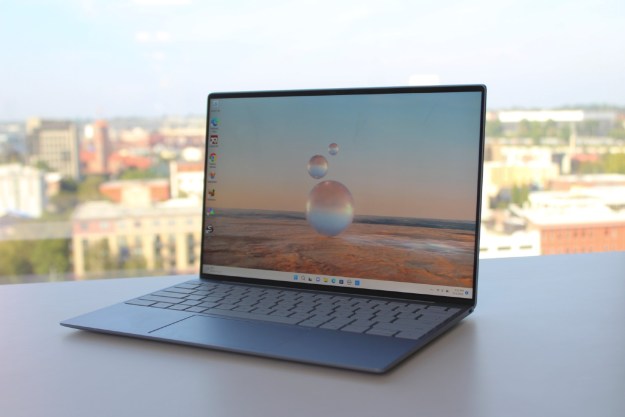
Dell upended its XPS laptop lineup, downsizing the XPS 17 to a new 16-inch model and the XPS 15 to a new 14-inch machine. At the same time, it pulled design cues from the XPS 13 Plus (now called the XPS 13) to create ultramodern and sometimes controversial new machines.
The XPS 14 and XPS 16 offer smaller dimensions than their predecessors, with varying power levels inside. As always, choosing between the two depends entirely on how you plan to use your laptop. So, which of these two outwardly similar machines is right for you?
Specs and configurations
| Dell XPS 14 | Dell XPS 16 | |
| Dimensions | 12.6 inches x 8.5 inches x 0.71 inches | 14.1 inches by 9.4 inches by 0.74 inches |
| Weight | 3.8 pounds | 4.8 pounds |
| Processor | Intel Core Ultra 7 155H Intel Core Ultra 7 165H |
Intel Core Ultra 7 155H Intel Core Ultra 7 165H Intel Core Ultra 9 185H |
| Graphics | Intel Arc Nvidia GeForce RTX 4050 |
Intel Arc Graphics Nvidia GeForce RTX 4050 Nvidia GeForce RTX 4060 Nvidia GeForce RTX 4070 |
| RAM | 16GB 32GB 64GB |
16GB 32GB 64GB |
| Display | 14.5-inch FHD+ (1920 x 1200) IPS non-touch, 120Hz 14.5-inch 3.2K (3200 x 2000) OLED touch, 120Hz |
16.3-inch 16:10 FHD+ (1920 x 1200) IPS non-touch, 60Hz 16.3-inch 16:10 4K+ (3840 x 2400) OLED touch, 90Hz |
| Storage | 512GB PCIe Gen4 SSD 1TB PCIe Gen4 SSD 2TB PCIe Gen4 SSD 4TB PCIe Gen4 SSD |
512GB PCIe Gen4 SSD 1TB PCIe Gen4 SSD 2TB PCIe Gen4 SSD 4TB PCIe Gen4 SSD |
| Touch | Optional | Optional |
| Ports | 3 x USB-C with Thunderbolt 4 1 x 3.5mm audio jack 1 x microSD card reader |
3 x USB-C with Thunderbolt 4 1 x 3.5mm audio jack 1 x microSD card reader |
| Wireless | Wi-Fi 6E and Bluetooth 5.3 | Wi-Fi 7 and BlueTooth 5.4 |
| Webcam | 1080p with infrared camera for Windows Hello | 1080p with infrared camera for Windows 11 Hello |
| Operating system | Windows 11 | Windows 11 |
| Battery | 69.5 watt-hour | 99.5 watt-hour |
| Price | $1,699+ | $1,699+ |
| Rating | 3.5 out of 5 stars | 3.5 out of 5 stars |
Both laptops are premium, with the XPS 14 starting at a slightly lower price. You’ll spend $1,700 for an Intel Core Ultra 7 155H chipset, 16GB of RAM, a 512GB SSD, integrated Intel Arc graphics, and a 14.5-inch Full HD+ IPS display. You can mix and match components from there to get up to $3,699 for 64GB of
Oddly enough, right now the XPS 16 also starts at $1,700 for a Core Ultra 7 155H, 16GB of
These two
Design
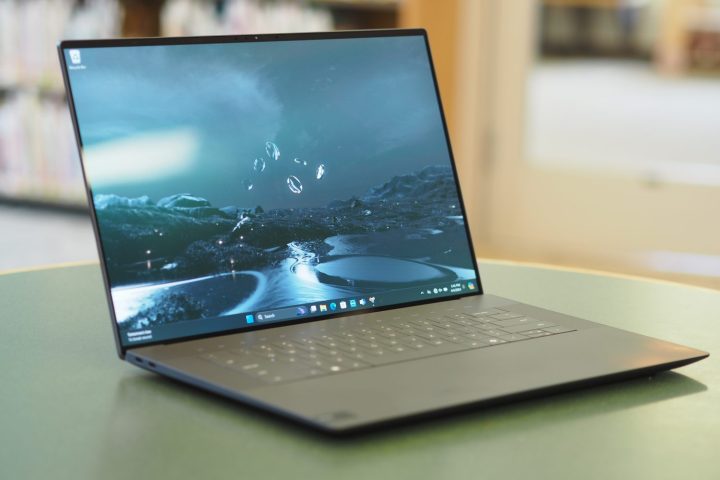
The XPS 13 Plus (now known as just the XPS 13) introduced several noticeable design changes to the XPS lineup while retaining other aspects. The XPS 14 and 16 match it with surprising consistency, even given the increasingly large dimensions. All three
Open them up, though, and everything’s changed. Gone are the glass or carbon fiber palm rests and standard island keyboards. In their place, you’ll find glass palm rests with hidden haptic touchpads, zero-lattice keyboards, and LED buttons replacing physical function keys. Each of these changes has kicked off controversy among XPS aficionados and general laptop buyers alike. But there’s no doubt that the new look is ultramodern and drop-dead gorgeous from an aesthetic perspective.
Interestingly, when comparing the XPS 14 and the XPS 16, the keyboard stays the same size while the speaker grilles grow on the larger model, as does the palm rest. But from a distance, they’re identical.
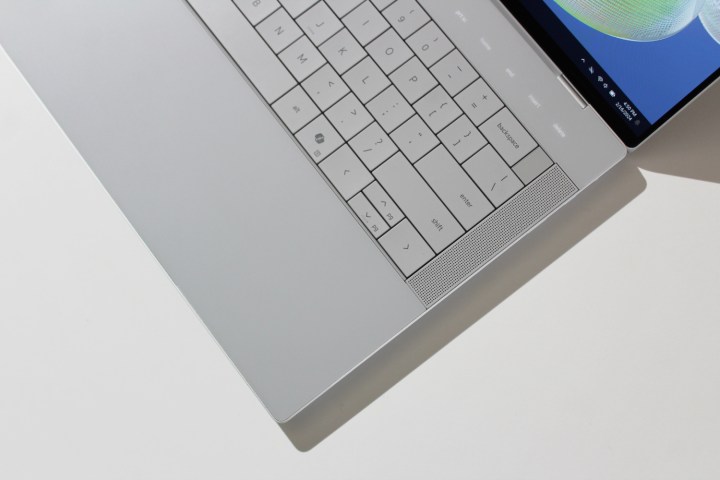
The XPS 14 and XPS 16 both offer excellent build quality, as per the brand. Thanks to the smallest display bezels on
The keyboard on both has large keycaps with zero-lattice key spacing, something you’ll need to get used to on both
The hidden haptic touchpad worked very well on the XPS 14 once you got used to being unable to tell where the touchpad starts and where it ends. It was large enough on the XPS 14 that you’re unlikely to find yourself swiping on the palm rest, and palm rejection was excellent. The XPS 16’s haptic touchpad is about the same, only with more (hidden) real estate for swiping.
Connectivity is one area where both
Regarding their webcams, both offer 1080p versions with infrared cameras for Windows 11 Hello facial recognition, and both have fingerprint readers embedded in their power buttons.
Performance
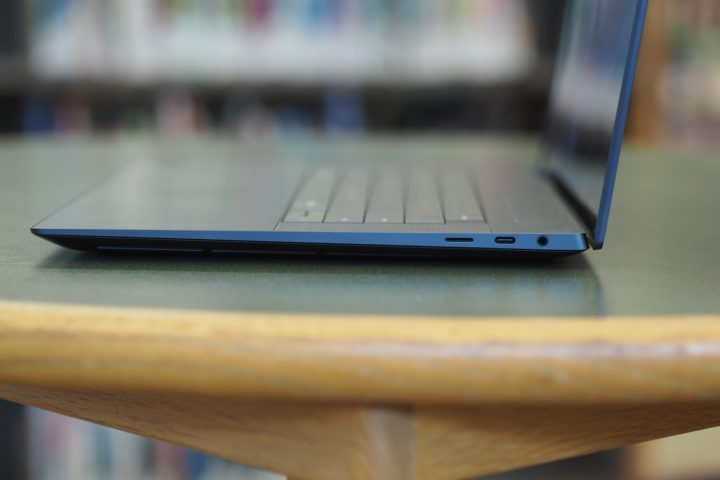
The XPS 14 and 16 are both built around Intel Core Ultra CPUs, members of the Meteor Lake chipset that adds in extra low-power CPU cores, a dedicated Neural Processing Unit (NPU) for on-chip AI support, and upgraded Intel Arc integrated graphics. The XPS 14 offers the Core Ultra 7 155H, a 28-watt CPUs with 16 cores (six Performance, eight Efficient, and two Low Power Efficient) and 22 threads that runs at up to 4.8GHz. The XPS 16 uses the Core Ultra 7 or the Core Ultra 9 185H, a 45-watt chip with the same number of cores and a slightly faster 5.1GHz Max Turbo frequency.
In addition, both machines can be configured with Intel Arc integrated graphics that fall somewhere between the older Intel Iris Xe graphics and the entry-level Nvidia GeForce RTX 4050 GPU. The XPS 14 can also be configured with the RTX 4050, while the XPS 16 offers up to the RTX 4070.
We reviewed the XPS 14 with the slightly faster Core Ultra 7 165H that is also on our XPS 16 review unit. Both
The XPS 16 will also be a much faster gaming laptop. Both
| Geekbench 6 (single/multi) |
Handbrake (seconds) |
Cinebench R24 (single/multi/GPU) |
Pugetbench Premiere Pro |
|
| Dell XPS 14 (Core Ultra 7 165H / RTX 4050) |
Bal: 2,334 / 13,070 Perf: 2,344 / 12,818 |
Bal: 84 Perf: 72 |
Bal: 101 / 681 / 5,738 Perf: 100 / 772 / 5,811 |
Bal: 3,274 Perf: 3,547 |
| Dell XPS 16 (Core Ultra 7 155H / RTX 4070) |
Bal: 2,196 / 12,973 Perf: 2,238 / 12,836 |
Bal: 69 Perf: 68 |
Bal: 100 / 838 / 9,721 Perf: 102 / 895 / 10,477 |
Bal: 5,401 Perf: 5,433 |
Display and audio

The XPS 14 and the XPS 16 offer a choice between lower-resolution and lower-power IPS displays and higher-resolution and more power-hungry OLED panels. The XPS 14 uses a 14.5-inch 16:10 screen size in either Full HD (1920 x 1200) IPS or 3.2K (3200 x 2000) OLED, while the XPS 16 uses 16.3-inch 16:10 panels in either Full HD+ IPS or
We reviewed both OLED options and found them both to provide fairly wide colors, with the AdobeRGB gamut falling a bit below the OLED norm at 85% for the XPS 14 and 90% for the XPS 16 (most are closer to 100%). but with excellent color accuracy at a Delta-E of well under the 1.0 considered excellent for creative work. The usual OLED inky blacks were on full display, while the XPS 14’s 374 nits of brightness was good, but not as good as the XPS 16’s 432 nits. Both IPS display options are likely to be decent, while the XPS 14’s version will be sharper at the same resolution.
Regarding audio quality, the XPS 14’s quad-speaker configuration was okay, lacking bass while providing an overall lack of clarity. The XPS 16’s similar setup provided a lot more volume and more bass.
Portability
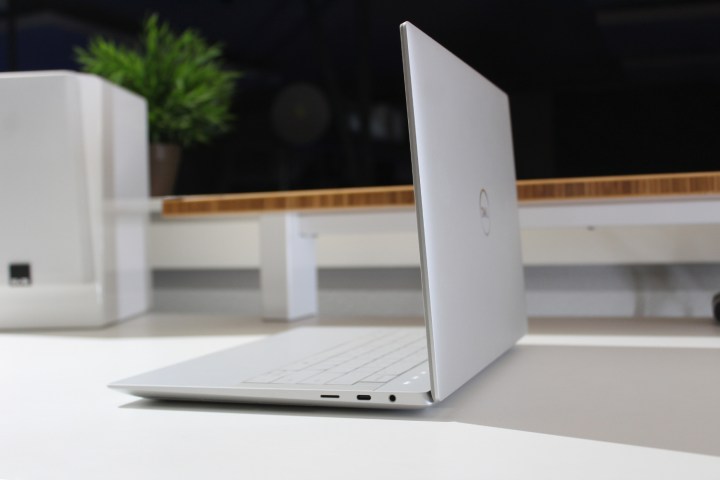
Neither laptop is particularly small or light, but the XPS 14 is considerably more portable than the XPS 16. The latter is large enough to be a burden to carry around, although less so than some other 16-inch
The XPS 14 provided an average battery life of around 8.5 hours of web browsing and 10 hours of local video. Real-life use was about four or 5 hours of typical productivity tasks. The XPS 16 has a significantly larger battery at 99.5 watt-hours compared to the XPS 14’s 69.5 watt-hours, but it also has a larger and, in the case of the OLED display, higher-resolution display. It managed just 5.5 hours of web browsing and video. The XPS 14 is therefore the longer lasting on a charge.
Choose your size and performance carefully
The XPS 14 and XPS 16 are so similar in so many ways that it’s hard to say one is better than the other. The XPS 16 is a lot faster when fully configured, and its large, high-res
But, not everyone needs the fastest performance and the XPS 14 offers significant portability advantages. It’s also less expensive when configured beyond the base model. So, which of these
Editors' Recommendations
- Wholesale laptop deals: How to buy cheap computers in bulk
- The XPS 16 is fighting an uphill battle against the MacBook Pro
- Here’s how two of the best Windows laptops compare to each other
- Best Dell XPS deals: Save on Dell XPS 13, Dell XPS 15 and Dell XPS 17
- Best laptop deals: Save on the Dell XPS 14, MacBook Pro 16 and more
